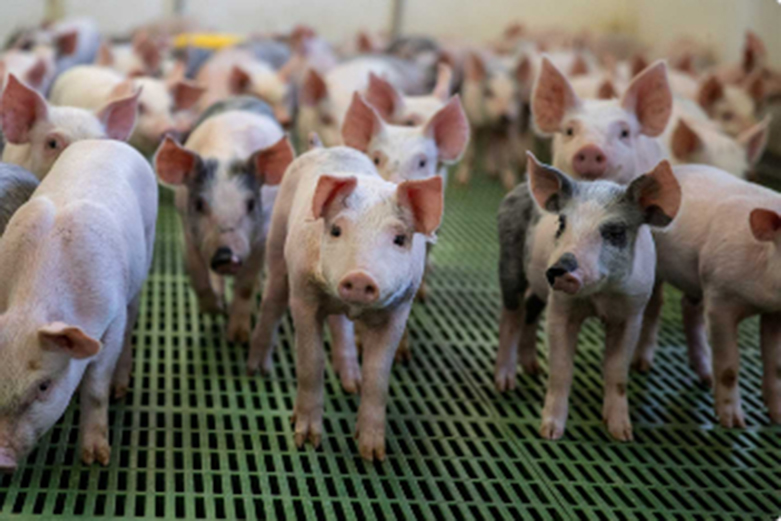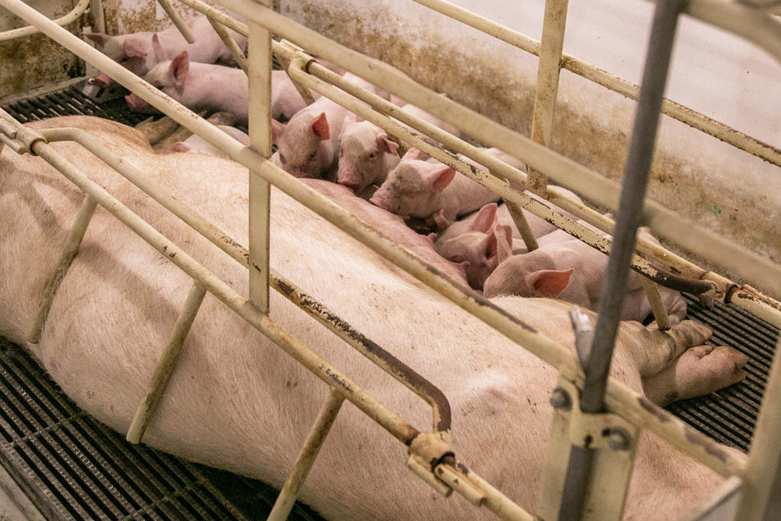Care given to piglets and sows within the first 24 hours of farrowing is known as day one care. Day one care involves several areas of focus, each demanding a unique set of strategies and attention, and starts even before the process of farrowing begins. Therefore, meticulous planning and attentive management before and throughout farrowing is crucial to ensure the health and productivity of sows and piglets. Here are a few key recommendations to optimize day one care.
Team and Facilities
Team Placement: Effective labor allocation and training are integral to efficient pig production. By placing staff members in roles they enjoy, they are more likely to excel in them. When possible, ensure day-one care employees are well-trained in recognizing the needs and signs of distress in sows and piglets. They should also be able to assist sows during farrowing, ensure piglets are warm, dry, and all piglets have consumed colostrum. Training new workers to develop expertise in specific areas contributes significantly to the overall productivity and health of the swine. Click here to access litter management training tools located in the PIC Reproduction Resource Center.
Farrowing Room Preparation: A successful farrowing begins by preparing the room for both the sow and her piglets. The temperature of the farrowing room should be kept between 70o and 76o F to maximize sow comfort. In addition, provide additional heat sources, such as heat lamps and/or mats, to create a comfort zone between 90o and 98o F for piglets.
Team Communication: Effective communication across the team and continuous training are vital. Regular discussions about farm goals, protocols, and the importance of each team member’s role help to build a cooperative and efficient working environment.
Monitor Farm Performance: Farms investing in extended care, such as 24-hour supervision, must focus on the right priorities to ensure a return on their investment. Ensure the staff is focused on the most critical tasks, such as checking on sows and piglets and managing their environment. Monitoring key performance indicators such as stillborn rates or pre-wean mortality is very important. This data helps identify areas of opportunity to improve and gauge the effectiveness of implemented strategies. Regular record-keeping and real-time monitoring enable adjustments to be made quickly on farm.
Sow Care
Sow Body Condition Management: A key aspect of sow robustness is body condition. Body condition management entails maintaining proper body condition throughout gestation and minimizing sows that fall in the over- or under-conditioned category as both extremes can prove problematic in the farrowing room. PIC recommends utilizing calipers to monitor and maintain sow body condition, see PIC’s latest caliper update information here.
Sow Health: To keep sows and piglets healthy, regularly check sows post-farrowing. Each sow should stand daily while being evaluated for any signs of sickness, distress, or lameness. Check to make sure sows have access to feed and water and are eating and drinking regularly. Feeders should be cleaned regularly and should have fresh feed provided. Monitor feeders to determine if sows are eating regularly, improper feed intake can be a sign of a sow in distress. Take each sow’s body temperature the day after she farrowed (24 hours post-farrowing). Any sow with a body temperature at or above 103oF must follow the farm’s/veterinarian protocol to reduce and control sow fever. Read PIC’s recommendations for minimizing sow fever post farrowing here.
Piglet Care
Colostrum Management and Piglet Care: The first hours after a piglet is born helps set them up for a strong start. Ideally, piglets should have access to colostrum within the first 30 minutes after birth. However, all pigs must receive adequate amounts of colostrum within 12 hours, or they will not survive. In addition, they should have access to a warm and dry comfort zone. Techniques like split suckling, administering colostrum to weaker piglets, or intervention in cases of chilled piglets can significantly improve piglet survival rates.
Cross-Fostering: In scenarios where a sow is unable to nurse her full litter, cross-fostering can provide a solution to allow all piglets proper room to receive the nutrients they need. It is crucial that piglets receive colostrum from their own mother prior to being moved to any other sow. The process of cross-fostering can be stressful or damaging for pigs if done incorrectly. There are several ways cross-fostering can be accomplished, and it is important to have an experienced team member manage cross-fostering in a way that works for your farm.
For additional information on colostrum management, click here and visit the “Large Litter Management” section of PIC’s Repro Resource Center.
In conclusion, successful sow care and day one care requires a comprehensive approach that combines good management practices, effective monitoring, skilled labor, and attention to the individual needs of sows and piglets. A healthy and productive sow herd will in turn lead to better economic returns for the producers. Contact your PIC technical service representative or reach out to PIC here to maximize your day one care techniques.





